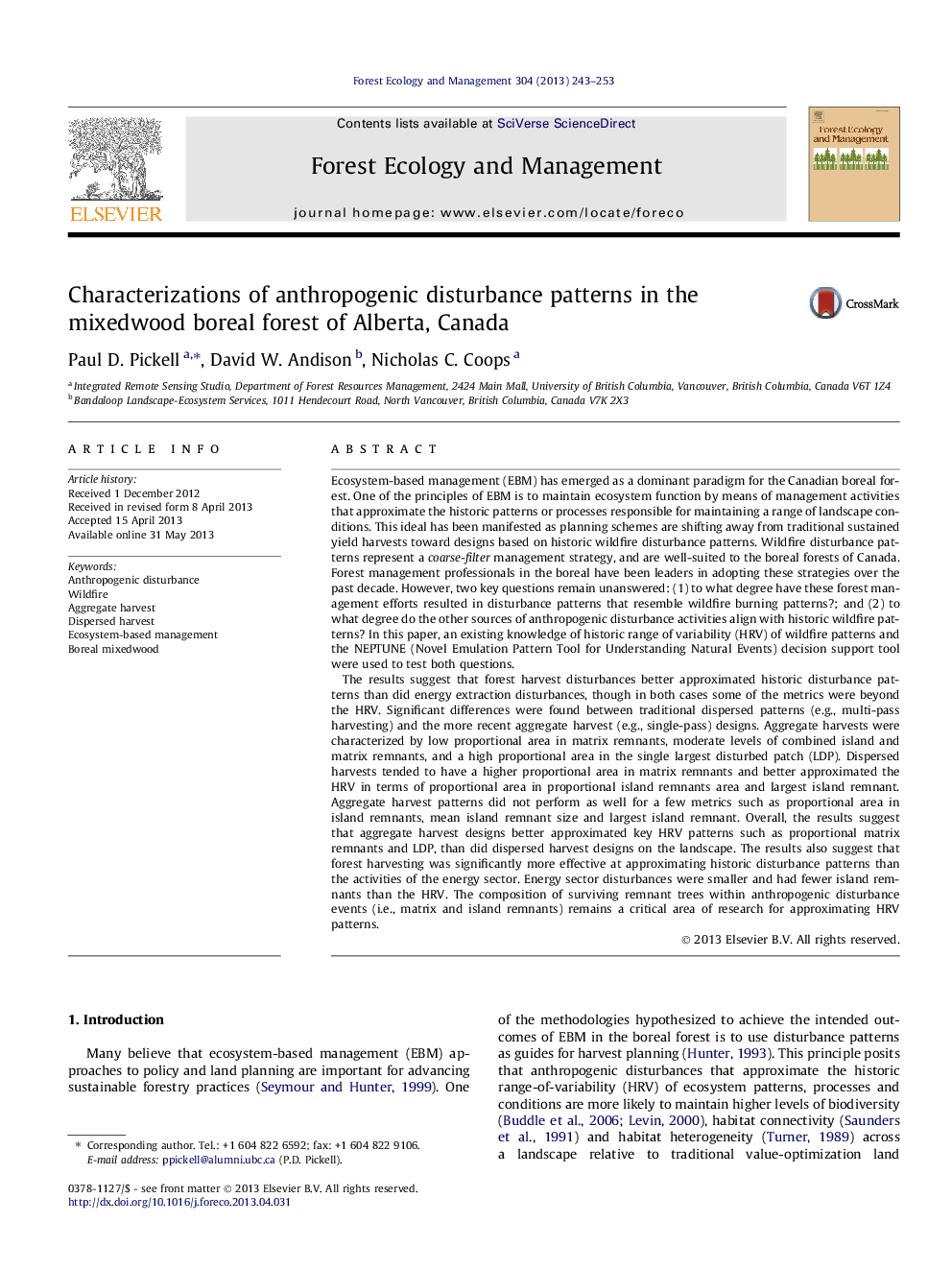| Article ID | Journal | Published Year | Pages | File Type |
|---|---|---|---|---|
| 6544258 | Forest Ecology and Management | 2013 | 11 Pages |
Abstract
The results suggest that forest harvest disturbances better approximated historic disturbance patterns than did energy extraction disturbances, though in both cases some of the metrics were beyond the HRV. Significant differences were found between traditional dispersed patterns (e.g., multi-pass harvesting) and the more recent aggregate harvest (e.g., single-pass) designs. Aggregate harvests were characterized by low proportional area in matrix remnants, moderate levels of combined island and matrix remnants, and a high proportional area in the single largest disturbed patch (LDP). Dispersed harvests tended to have a higher proportional area in matrix remnants and better approximated the HRV in terms of proportional area in proportional island remnants area and largest island remnant. Aggregate harvest patterns did not perform as well for a few metrics such as proportional area in island remnants, mean island remnant size and largest island remnant. Overall, the results suggest that aggregate harvest designs better approximated key HRV patterns such as proportional matrix remnants and LDP, than did dispersed harvest designs on the landscape. The results also suggest that forest harvesting was significantly more effective at approximating historic disturbance patterns than the activities of the energy sector. Energy sector disturbances were smaller and had fewer island remnants than the HRV. The composition of surviving remnant trees within anthropogenic disturbance events (i.e., matrix and island remnants) remains a critical area of research for approximating HRV patterns.
Related Topics
Life Sciences
Agricultural and Biological Sciences
Ecology, Evolution, Behavior and Systematics
Authors
Paul D. Pickell, David W. Andison, Nicholas C. Coops,
